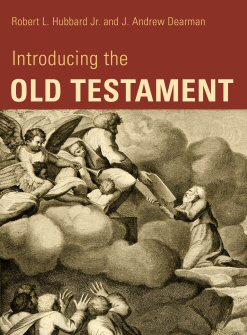Introducing the Old Testament

Overview
In this up-to-date, student-friendly text, Robert Hubbard and J. Andrew Dearman bring decades of scholarly study and classroom experience to bear as they introduce readers to the context, composition, and message of the Old Testament.
Each chapter orients readers to the Old Testament book or books under consideration, outlining historical and cultural background, literary features, main characters, and structure. Throughout these discussions—of the Torah, the historical books, the prophets, and the poetry—Hubbard and Dearman also identify and trace key theological themes.

Key Features
- Replete with maps, illustrations, sidebars, discussion questions
- Includes helpful suggestions for further reading
- Effectively equips students to read, wrestle with, and personally engage these ancient sacred texts.
Contents
- Part 1: Getting Started
- Introduction
- Old Testament History in Context
- Part 2: The Torah
- What Is the Torah?
- The Book of Genesis 1–11
- The Book of Genesis 12–50
- The Book of Exodus
- The Book of Leviticus
- The Book of Numbers
- The Book of Deuteronomy
- Part 3: The Historical Books
- What Are the Historical Books?
- The Book of Joshua
- The Book of Judges
- The Book of Ruth
- The Books of 1–2 Samuel
- The Books of 1–2 Kings
- The Postexilic Historical Books
- The Books of 1–2 Chronicles
- The Book of Ezra- Nehemiah
- The Book of Esther
- Part 4: The Prophets
- What Is Hebrew Poetry?
- Who and What Are the Prophets?
- The Book of Isaiah
- The Book of Jeremiah
- The Book of Ezekiel
- The Book of Daniel
- The Books of Hosea, Amos, and Micah
- The Books of Zephaniah, Habakkuk, and Joel
- The Books of Jonah, Nahum, and Obadiah
- The Books of Haggai, Zechariah, and Malachi
- Part 5: The Poetry
- What Are the Wisdom Books?
- The Book of Job
- The Book of Psalms
- The Book of Proverbs
- The Book of Ecclesiastes
- The Book of Lamentations
- The Book of the Song of Songs
- Part 6: Conclusion
- The Canon and Text of the Hebrew Bible / Christian Old Testament
Top Highlights
“In Israel, interpreting dreams was one activity of a prophet (Deut 13)” (Page 333)
“First, each chapter orients readers to the background and contents of the OT book (or books) under consideration” (Page 3)
“Ahijah the prophet had both appointed Jeroboam king and condemned him, and in ch. 16 an oracle by Jehu the prophet ended Baasha’s father-son dynasty. This prophetic pattern of an announcement spoken to leaders and followed by fulfillment will persist throughout 1-2 Kings as one of the books’ unique and dominant themes.” (Page 186)
“There is no reference to Daniel in Ben Sira. Some Jews did not consider the book a part of the prophetic category, but a more likely reason is that the book of Daniel was written, at least in final form, about the time of Ben Sira himself and had not yet achieved a widespread circulation.” (Page 483)
“Parallelism is the primary feature of Hebrew poetry that distinguishes it from its European counterparts.” (Page 252)
Product Details
- Title: Introducing the Old Testament
- Author: J. Andrew Dearman and Robert L. Hubbard Jr.
- Publisher: Eerdmans
- Publication Date: 2018
- Pages: 560
- Resource Type: Introduction
- Topic: Old Testament
About the Authors
J. Andrew Dearman is professor of Old Testament at Fuller Theological Seminary, associate dean at Fuller's regional campus in Houston, Texas, and author of the NICOT volume on Hosea.
Robert L. Hubbard Jr. is professor emeritus of biblical literature at North Park Theological Seminary, Chicago, general editor of the New International Commentary on the Old Testament series, and author of the award-winning NICOT volume on Ruth.